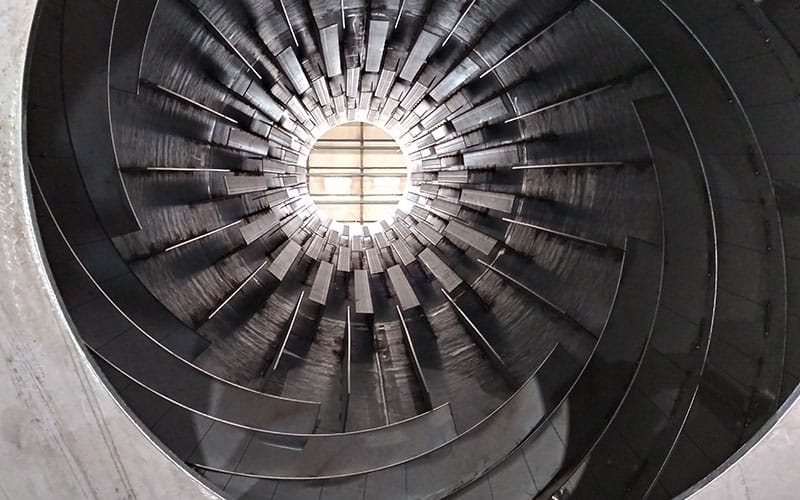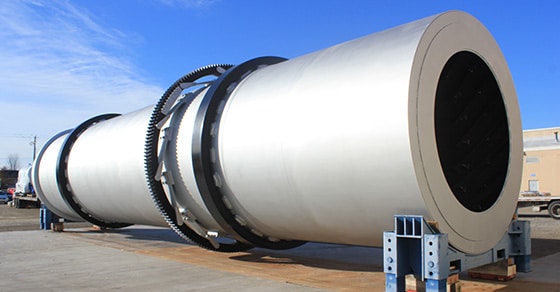In the ever-evolving catalyst industry, rotary drums stand out as indispensable equipment. These versatile machines are pivotal to various stages of the catalyst production process. More recently, they have also been employed in spent catalyst regeneration, improving both the sustainability and economics of catalytic reactions. The following covers the many different applications of rotary drums throughout catalyst manufacturing, a deep dive into how they are used in producing hydrotreating catalysts, and the benefits rotary drums bring to catalyst production lines.
The Many Roles of Rotary Drums in Catalyst Production
Rotary drums are cylindrical vessels that rotate around their axis and are used in a wide range of industrial processes. In the catalyst industry, they are primarily used in the following ways:
Granulation Drums
For catalysts or catalyst supports (substrates) used in granular form, granulation drums facilitate granule formation and promote consistent size and shape. This uniformity is vital for the efficient packing and flow of catalysts in reactors.
Coating (and Mixing) Drums
In some applications, catalysts need to be coated or impregnated with a protective or functional layer. Most often, an active catalytic component (typically a metal) is impregnated onto a catalyst substrate such as silica, alumina, zeolite, or otherwise. Coating drums facilitate uniform application of coatings thanks to the tumbling bed action they employ.
Similarly, coating drums can be used to achieve homogeneous mixing of different components, providing thorough blending and ensuring catalysts meet required specifications.

Coating drum in the FEECO Fabrication Center
Drying Drums
Drying is an essential aspect of ensuring catalysts meet the moisture content specifications for downstream processing or application. Rotary dryers are widely used in these settings to accomplish uniform catalyst drying, while maintaining product quality, with many factors affecting the drying process.
High-Temperature Thermal Treatment (Rotary Kilns):
Catalysts undergo high-temperature thermal treatment in rotary kilns to cause chemical reactions or phase changes that improve catalytic activity. Calcination of catalysts is particularly common to chemically bond active catalyst components onto carriers, or to activate the catalyst on its substrate.
Interestingly, while rotary kilns are vital in the initial production of catalysts, they can also be used at the end of the catalyst lifecycle to recover spent catalysts; rotary kilns can essentially desorb the contaminants, allowing the catalyst to be used again.

Cooling Drums
After drying or high-temperature processes, catalysts often need to be cooled to within a specific temperature range. Rotary coolers efficiently reduce the temperature of the catalysts while preventing thermal shock and maintaining product integrity. They can also be used as a way to stop any ongoing reaction initiated in the kiln.
Case Study: Hydrotreating Catalysts
Hydrotreating catalysts are used in the refining of crude oil to remove impurities such as sulfur, nitrogen, and metals. This process, known as hydrotreating or hydroprocessing, improves the quality of the oil and makes it suitable for further processing and use in various applications.
Key Functions Carried Out by Hydrotreating Catalysts:
Catalysts can be used to carry out the following objectives in hydrotreating:
- Sulfur Removal (Hydrodesulfurization, HDS): Converts sulfur compounds into hydrogen sulfide (H2S), which is then removed from the oil.
- Nitrogen Removal (Hydrodenitrogenation, HDN): Converts nitrogen compounds into ammonia (NH3), which is also removed.
- Metal Removal (Hydrodemetallization, HDM): Removes metals like nickel and vanadium that can poison catalysts in subsequent refining steps.
- Saturation of Aromatics: Reduces aromatic content to improve fuel properties.
The type of catalyst chosen depends on the hydrotreating goals. When the primary objective is to remove sulfur from crude oil, producers favor cobalt-molybdenum catalysts, whereas when nitrogen removal is the goal, they favor nickel-molybdenum catalysts.1
Rotary Drums in Hydrotreating Catalyst Manufacturing
Rotary drums form the foundation of hydrotreating catalyst production, carrying out the following steps:
Mixing (Impregnation)
The catalyst substrate, typically alumina in this case, must be thoroughly mixed with the active catalytic component(s), also known as a precursor. The precursor is administered as a solution containing one or more of the following metals: cobalt (Co), molybdenum (Mo), nickel (Ni), or tungsten (W).
Impregnation is achieved as a result of capillary action drawing the metal-containing solution into the pores of the solid support, effectively adsorbing the metal precursor onto the substrate material.2
Rotary drums are favored in this setting for their simple operation and the uniform mixing they provide.
Drying
Upon impregnation, the resulting material must go through a drying process to remove excess moisture in the form of solvent. A rotary dryer achieves this efficiently while also allowing for a high throughput.
Research has shown that distribution of the metal framework over the support material is largely influenced by the impregnation and drying stages, with several metal profiles possible.2
Calcination
After moisture removal, the catalyst is calcined to cause both gas-solid and solid-solid reactions that decompose the metal precursor and form an oxide, while removing gaseous products, a well as any cations or anions.2 This chemical bonding of the active metal to the support is carried out in a rotary kiln. The effectiveness of this step relies on careful temperature control.
Cooling
Cooling is typically desirable after calcination because the material exiting the rotary kiln is otherwise too hot for subsequent handling or storage.
Spent Catalyst Regeneration
Once the catalyst has been used in hydrotreating to the point that it is considered spent, it can be reactivated or regenerated through additional treatment in a rotary kiln. This serves to remove any carbon deposits that have accumulated, restore the oxidized state of active metals, and re-disperse the metals for even distribution on the support material.
In addition to the significant volumes at which hydrotreating is conducted, the primary reactor type employed (the fixed bed reactor) presents a distinct disadvantage: it is known for fast catalyst deactivation.3 This makes the opportunity to recover the spent catalyst vital in reducing potential waste and improving the economics of the process.
Advantages of Using Rotary Drums in Catalyst Manufacturing:
As many other industries have discovered, rotary drums offer several advantages beyond their versatile nature that make them the favored processing option in so many settings:
- Uniform Processing: Rotary drums promote consistent quality of the catalyst by providing uniform processing.
- Capacity: Rotary drums are ideal for large-scale operations, offering a high throughput.
- Reliable: Mechanically sound design combined with heavy-duty construction provides decades of reliable operation when properly maintained.
Conclusion
Rotary drums are undeniably essential to the catalyst manufacturing process, providing versatility and reliability across a range of applications. From the production of high-quality catalysts to the regeneration of spent materials, these machines ensure uniform processing, high throughput, and consistent product quality.
FEECO engineers and manufactures the industry’s most reputable rotary drums in the industry. And with process development testing and comprehensive parts and service support available, catalyst producers can be confident that their equipment will perform exactly as designed. For more information on our custom rotary drums for catalyst manufacturing, contact us today!
SOURCES:
- Ortega, E. (2021, October 6). An overview of hydrotreating. AIChE. https://www.aiche.org/resources/publications/cep/2021/october/overview-hydrotreating
- Catalyst Manufacturing Center. Catalyst Manufacturing Center | Rutgers Department of Chemical and Biochemical Engineering. (n.d.). https://cbe.rutgers.edu/research/centers-and-programs/catalyst-manufacturing-center
- Emmanuel Rodríguez, E., Félix, G., Ancheyta, J., & Trejo, F. (2018). Modeling of hydrotreating catalyst deactivation for heavy oil hydrocarbons. Fuel, 225, 118–133. https://doi.org/https://doi.org/10.1016/j.fuel.2018.02.085

